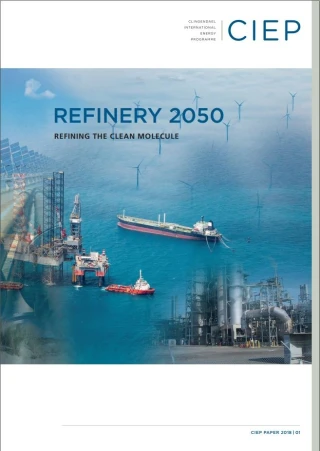
Refinery 2050; Refining the Clean Molecule
- Publication:
- CIEP, April 2018
Introduction
If the refining sector wants to remain a part of the overall energy transition, it will have to pursue ways to 'clean the molecule. Promising measures to reduce a refiner's carbon footprint are the optimisation of internal efficiency measures as well as new ways to integrate refineries into local economic value chains (e.g. heat, electricity, RES-hydrogen, e-fuels, biofuels, CO2). These measures will decrease the refining sector's carbon intensity whilst ensuring the still needed refined product supply.
Potentially some of the emission reduction can be realised further down the hydrocarbon value chain. Most importantly, this route may be more cost-effective as it utilises existing assets,preventing the termination of multi-billion-dollar assets. This is further amplified by the significant barriers-to-exit. Moreover, barriers-to-integrate prevent refineries from cooperating with local industry in order to capitalise on existing carbon reduction potential outside their gates.
Governments can facilitate energy and carbon energy efficiency of refineries by removing some of these obstacles. For individual refiners, it is clear that only measures inside the refinery gate are not enough, and that energy and carbon efficiency measures outside the refinery gates require cooperation across sectors and governments. It is therefore important that governments or other institutions that can facilitate the emergence of these new markets and infrastructure, recognise the potential contribution of refineries to the future low carbon energy system.





